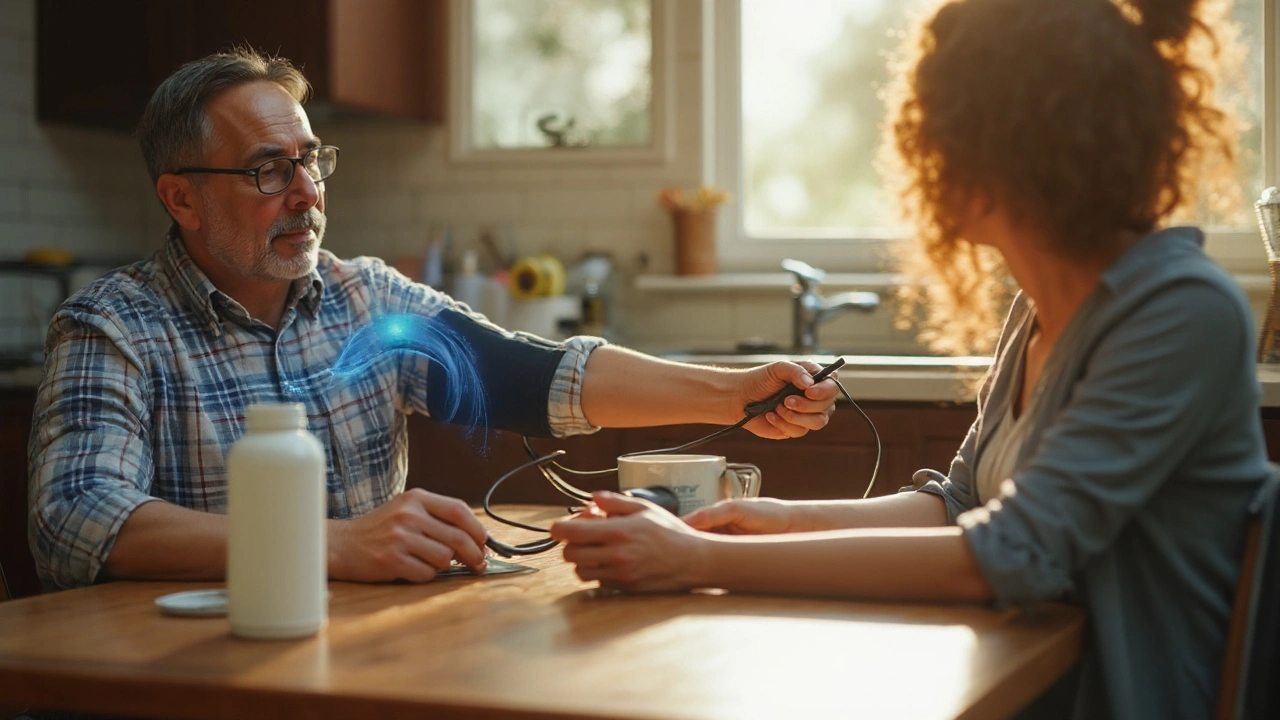High or low blood pressure can feel like a mystery until you see the numbers on a cuff. Your systolic (top) reading shows how hard your heart pushes blood out, while diastolic (bottom) tells how relaxed the vessels are between beats. When those numbers creep above 130/80, doctors call it hypertension – a silent risk factor for heart attacks and strokes.
Most people don’t need fancy tests to start controlling BP. A simple home monitor gives reliable data if you sit still, keep your arm at heart level, and take the same time of day each reading. Track three numbers over a week; look for patterns instead of one‑off spikes caused by caffeine or stress.
Diet is the easiest lever to pull. Cut back on salty snacks, processed foods, and sugary drinks – they push fluid into your bloodstream and raise pressure. Swap them for fresh veggies, fruits, and whole grains; the extra potassium helps vessels relax.
Move a little every day. Even a 20‑minute walk beats sitting on the couch for blood flow. If you enjoy sports, aim for moderate intensity – think brisk cycling or swimming – three to five times a week.
Weight matters too. Carrying extra pounds forces your heart to work harder, which spikes BP. Losing just 5 % of body weight can shave several points off your reading.
Avoid smoking and limit alcohol. Both raise pressure temporarily and damage arteries over time. If you’re stressed, try deep breathing, meditation, or a hobby that makes you forget the clock; stress hormones can jack up numbers fast.
If lifestyle tweaks aren’t enough, doctors prescribe meds. The most common are ACE inhibitors (like lisinopril) that relax blood vessels, and thiazide diuretics (such as hydrochlorothiazide) that help your kidneys shed excess salt and water.
Beta‑blockers (e.g., metoprolol) slow heart rate, while calcium channel blockers (like amlodipine) keep arteries from tightening. Some patients need a combo pill to hit multiple pathways at once – it’s easier to remember one tablet than three.
Never skip doses or stop suddenly; that can cause rebound spikes. If side effects bother you, talk to your pharmacist – they can suggest alternatives or adjust the dose.
Regular check‑ups keep everything on track. Your doctor will review numbers, labs, and how you feel. If you notice dizziness, fainting, or swelling in ankles, call them right away – those could signal that a dosage needs tweaking.
Bottom line: controlling blood pressure is a mix of simple habits and, when needed, smart medication choices. Keep a log, stay active, eat clean, and keep the conversation open with your healthcare team. You’ll feel better, and you’ll give your heart a real chance to stay strong for years to come.

Clear, evidence-backed guide to L-Arginine: how it works, what it helps (BP, ED), safe doses, food sources, risks, and smarter alternatives like citrulline.